This post may contain affiliate links. Please read our disclosure policy.
A simple homemade flaxseed milk recipe, packed with nutritional value and health benefits.
Flaxseed milk is a delicious dairy-free milk option that requires just two ingredients and comes packed with a whole list of health benefits. It’s an amazingly nutritious plant-based milk, and flaxseed benefits are worth shouting about.
Flaxseed (otherwise called linseed) is a bit of a wonder ingredient for vegans and non-vegans alike. Flaxseed works amazingly as a gluten-free vegan egg replacement, is packed with nutrition and a perfect healthy addition to smoothies, porridge, etc.
The process of making flaxseed milk is slightly different from the majority of other plant-based milk recipes – with a couple of additional steps. However, for all the nutritional value that flax milk gives, I think it’s worth it.
Plus, flaxseed milk is arguably better for the environment than other dairy-free milk options, such as almond milk. As it takes a fraction of the water needed by certain nuts (and obviously dairy as well), to grow the plant.
Flaxseed Health Benefits
In just one tablespoon of flaxseed, they are good sources of protein, carbs, and fiber.
The seeds are also full of omega-3 fatty acids as well as a variety of vitamins and minerals, including Vitamin B1, Magnesium, Phosphorus, and more.
The high level of fiber is good for us in several ways. Flax seeds are high in fiber with two types of fiber – soluble and insoluble fiber. These work together to improve gut health and digestion, as well as having a positive effect on blood sugar levels and cholesterol.
The combination of flax seed’s protein and fiber levels also help to keep you satiated for longer, so could help with weight management.
However, the majority of the health benefits associated with flaxseed are linked with the high levels of ALA omega3.
ALA omega-3 is an essential fatty acid that has to be consumed through food, as our bodies can’t produce it. However, it comes with a host of health benefits.
For example, ALA is shown to improve heart health, reducing the risk of a heart attack, a stroke and cholesterol levels. ALA also reduces inflammation and even has anti-cancerous properties. This is particularly noted with specific types of cancer, such as breast and prostate.
Flax seeds are also a rich source of Lignans, which not only has certain estrogen properties but also contain anti-cancerous features too.
Are Linseed and Flaxseed The Same Thing?
The quick answer is, yes. Technically flaxseed and linseed are the same thing – however, they refer to different uses for the plant. Flaxseed comes in two varieties (yellow and brown) and are both referred to as flaxseed or linseed.
The only difference I’ve been able to find in terms of why someone would use one word over the other is context. Typically, when referring to using the seeds in an edible way, we tend to call the seeds flaxseed. However, when using the plant for non-edible uses, it is/was typically referred to as linseed.
Linseed has had a variety of purposes in history, including paper making, linseed oil being used as a polish etc.
However, regardless of what you call them and what they’re called on in-store packaging, they are the same thing.
Making Homemade Flaxseed Milk
This flaxseed milk recipe has been a bit of a process to make, because of the gelatinous nature of the seeds. Flaxseed milk can run into similar problems as homemade oat milk – where it can be quite ‘slimy’ if done incorrectly. Flaxseeds contain gelling properties that gel up when combined with liquid ( similar to chia seeds).
Through my various experimentations with making homemade flaxseed milk, I’ve had some flops along the way. Luckily, I think I’ve managed to pick up a few tips too for wonderfully creamy homemade flaxseed milk.
Tips To Non-Slimy Flaxseed Milk
- Hot water will make your homemade flaxseed milk slimier.
- Blending your flaxseed milk for too long will affect the slime levels. The longer you blend it, the slimier your milk will be.
- It also goes to reason that you need to ratio the liquid to seeds properly. As flaxseeds are used to make an egg substitute- we know that adding a small amount of liquid will create a gelatinous mix. So you need to make sure to add enough water to avoid this.
My first experiment involved simply blending the seeds with water for a couple of minutes, straining and away we go. Except for, unfortunately, away we don’t go because it was a gelatinous mess that was almost impossible to strain.
The second time I double strained AND added extra water the second time blending. This worked in some ways and didn’t yield awful results – but still reasonably gummy.
After several unsuccessful flaxseed recipes, I decided to try the method outlined in my recipe below.
The Flaxseed Milk Recipe
Ingredients
- flaxseeds – I used golden flax seeds; you can also use brown.
- filtered water
Steps
Start by soaking the flaxseeds in fresh water overnight.
Sieve the soaked flaxseeds to remove the flaxseed gel.
Note: the flaxseed gel can be used in baking as a replacement for egg (e.g. in meringues) or as a face mask.
Rinse the flaxseeds well.
Add the flaxseed to a high-speed food processor/blender. Pour in the water and blend for a moment (ideally 10-20 seconds).
Note: if your blender is not very powerful, just keep on blending for a few minutes until the seeds have broken down.
Pour the milk through a sieve to collect all the pulp.
You can also pour the milk through a nut milk bag. This will help to collect any smaller viscous-y particles.
The flaxseed milk is ready. Store in a glass bottle in the fridge for 3-5 days.
Method using dry seeds
It is possible to use dry seeds instead of soaking them. You can then blend them directly with the water. However, keep in mind that after you blend them, you will have to remove the flaxseed gel.
To do this, let the milk rest for 30-60 minutes, then scoop out the slimy layer that has formed on the surface of the milk.
Then, your milk is ready for use.
Flaxseed Milk Variations
Like with all of my dairy-free milk recipes, I’ve kept this recipe to the bare minimum of two ingredients. This is because I like to include a variety of flavouring/ sweetening options that you can then experiment with to find your perfect flavour.
This flaxseed milk recipe is no different. I find that flaxseed milk isn’t the most interesting milk on its own. However, when paired with a dash of sweetness and some vanilla – it can be amazing. So, here is a list of optional add-ins that you can give a try.
Optional Flaxseed Milk Add-Ins
- Sweetener: I like to stick to natural unrefined sugars like maple syrup, agave, or Medjool dates. Everyone’s sweet tooth is slightly different, so I’d suggest starting with 1/2 tbsp of any liquid sweetener or 2-3 Medjool dates. You can then increase the amounts from there if needed.
- Spices: Vanilla extract ( I use homemade), Cinnamon, nutmeg etc. can all work towards turning dairy-free milk from being somewhat bland to becoming almost addictive. Try 1/4 tsp to begin with and increase, if needed.
- As with all my plant-based milks, I can’t not suggest adding Cacao powder for a delicious chocolate milk variety.
If you have any questions about this soy milk recipe, then feel free to leave them in the comments below. Also, I love to see any recreations to you can tag me on Instagram @AlphaFoodie.
For the full plethora of dairy-free homemade milk, feel free to browse through the DIY section of my blog or search ‘milk‘ in the search bar for options including soy, rice, almonds, oats, pistachio, Tigernut, etc.
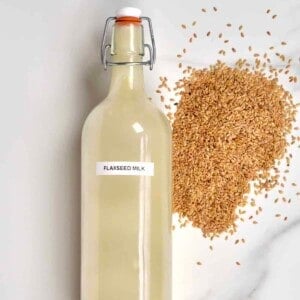
The best flax milk
Equipment
Ingredients
- 1/2 cup flax seeds golden flaxseed/linseed
- 4.5 cups filtered water
Instructions
- Add the flaxseed to a high-speed food processor/blender. Pour in the water and blend for a few minutes or until the seeds have broken down. Add dates, vanilla, and spices if using.
- Remove the flaxseed gel*: let the milk rest for 3-60 minutes, then scoop out the slimy layer that has formed on the surface of the m
- Pour the milk through a nut milk bag to collect all the pulp. This will help to collect any smaller viscous-y particles.
- The flax milk is ready. Store in a glass bottle in the fridge for 3-5 days.
Video
Notes
Nutrition
Nutrition information is automatically calculated, so should only be used as an approximation.

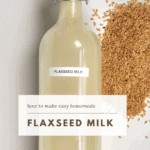
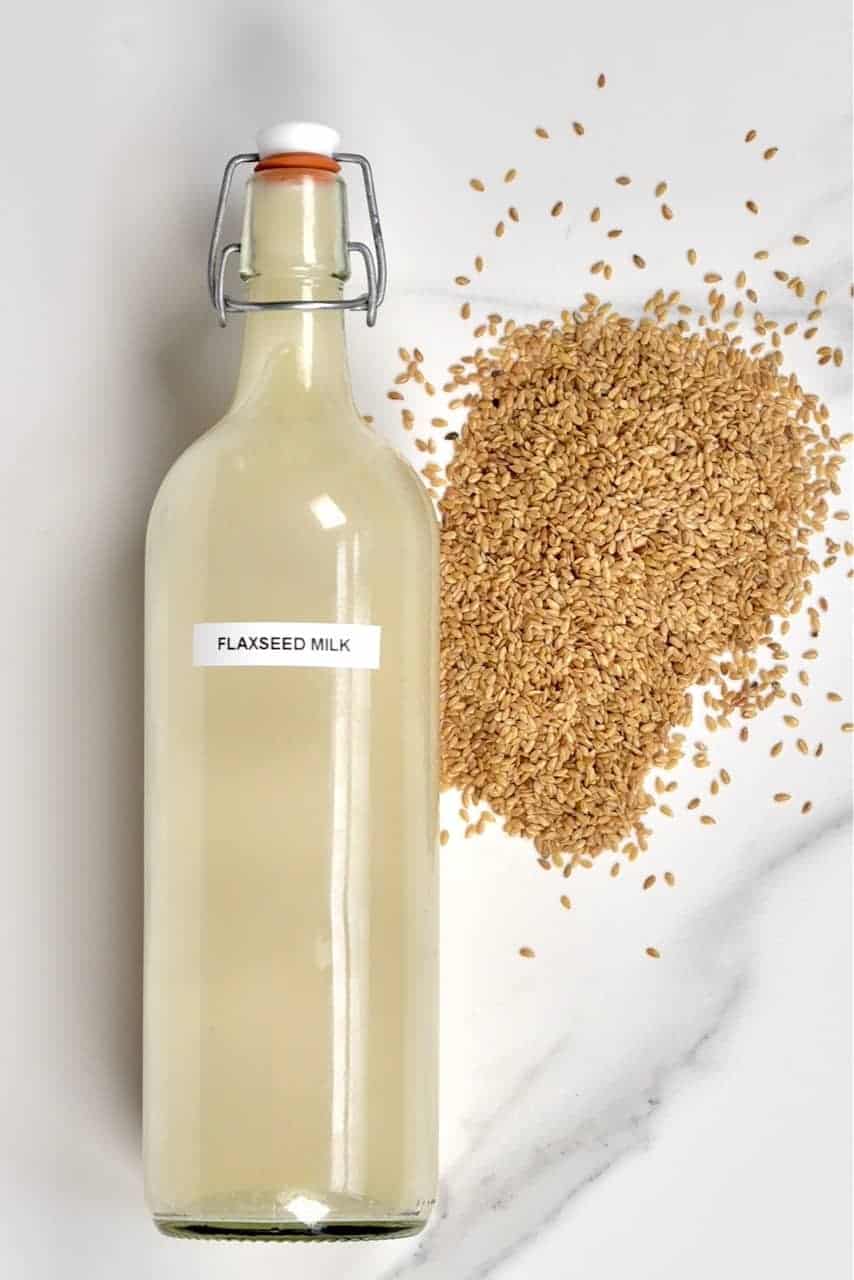
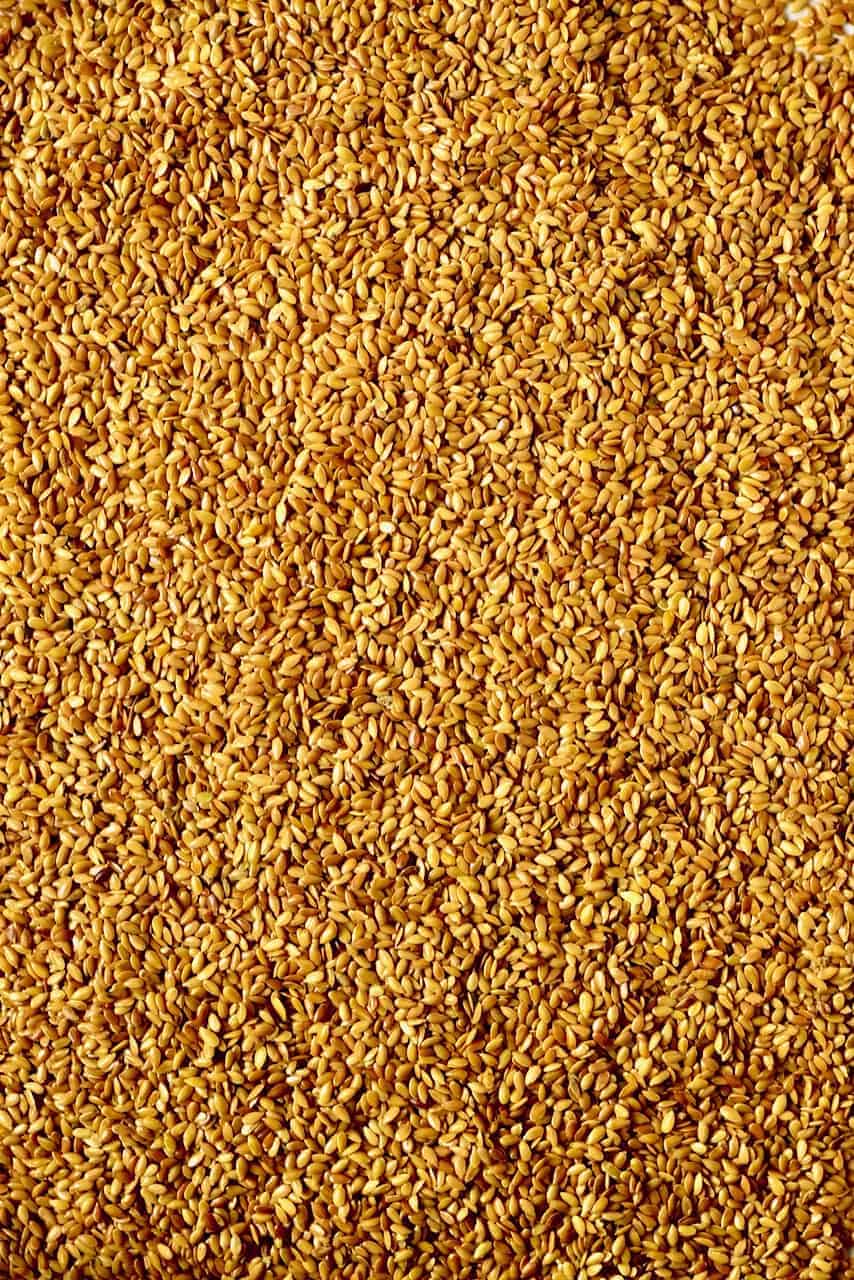
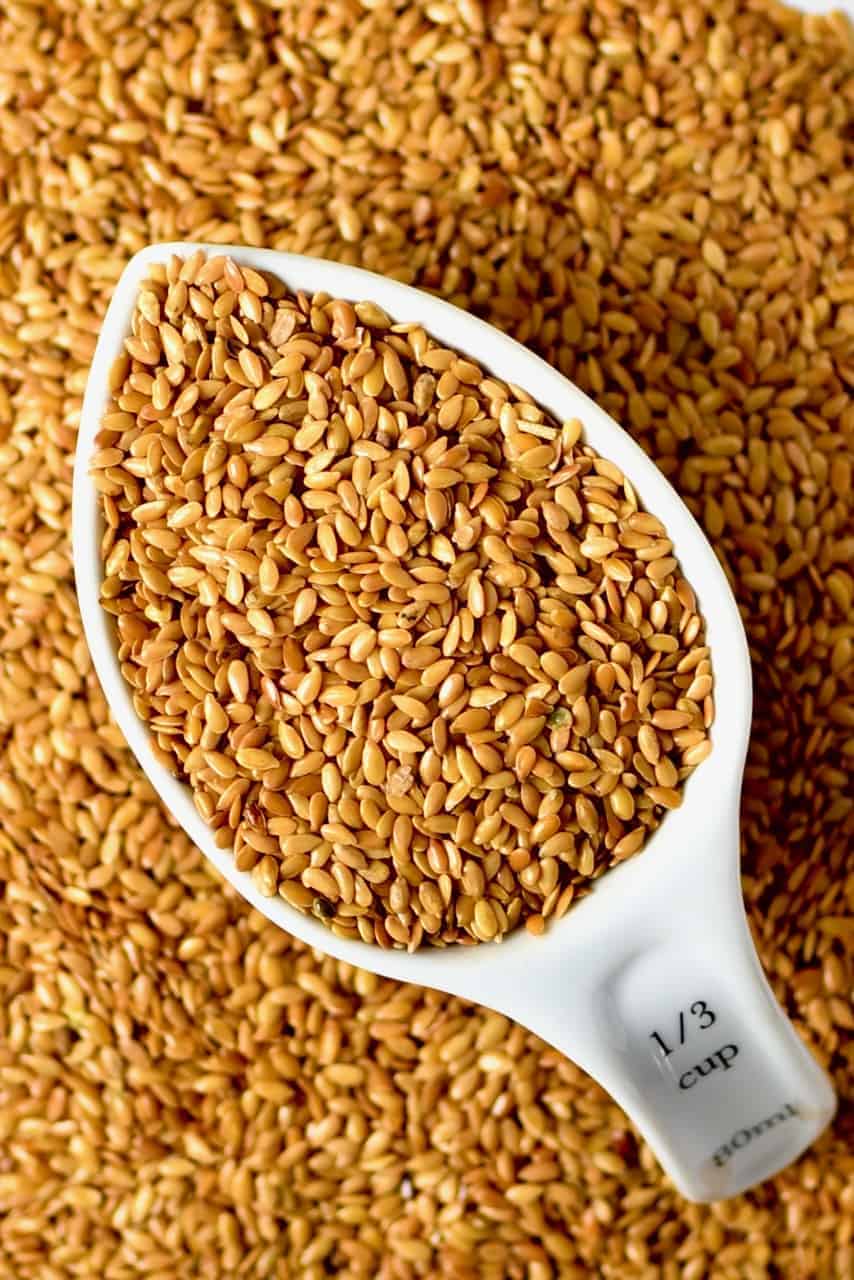
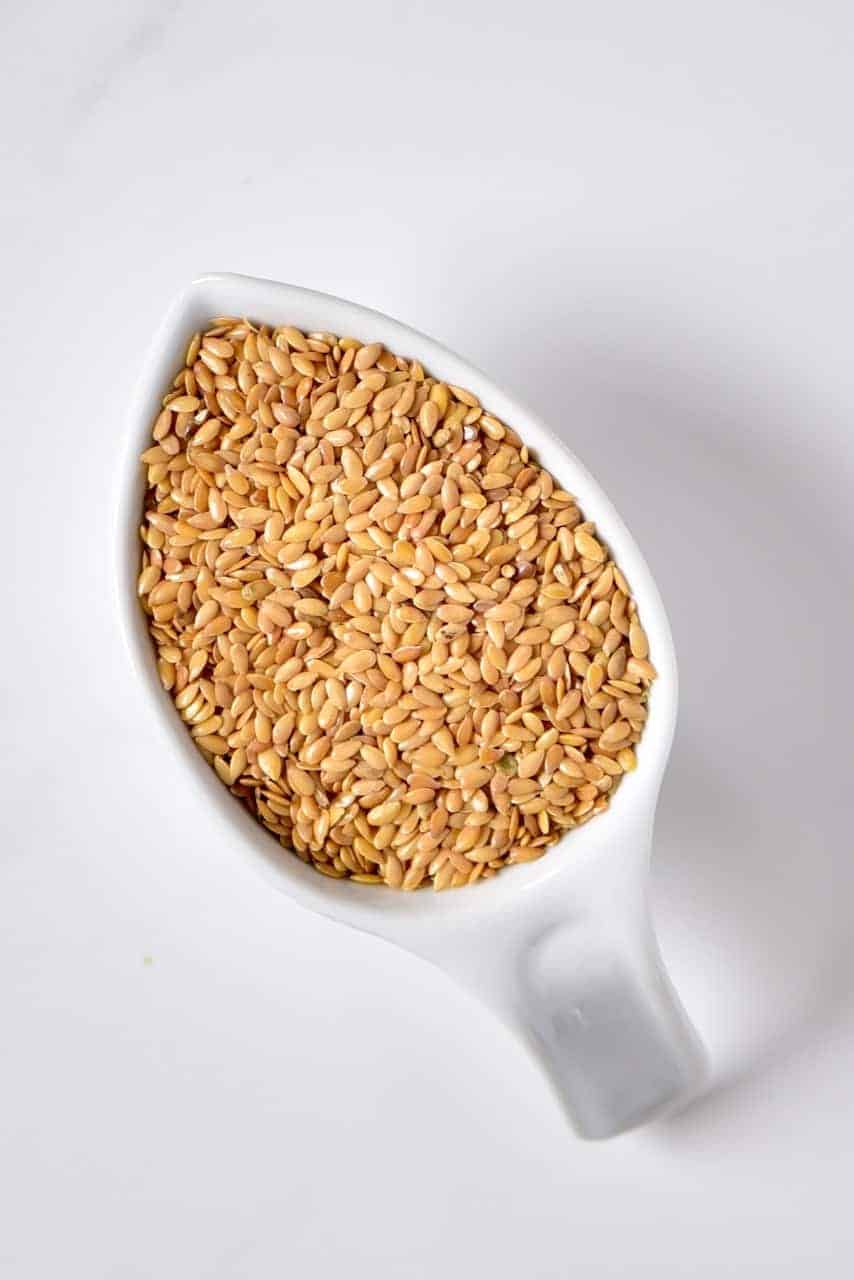
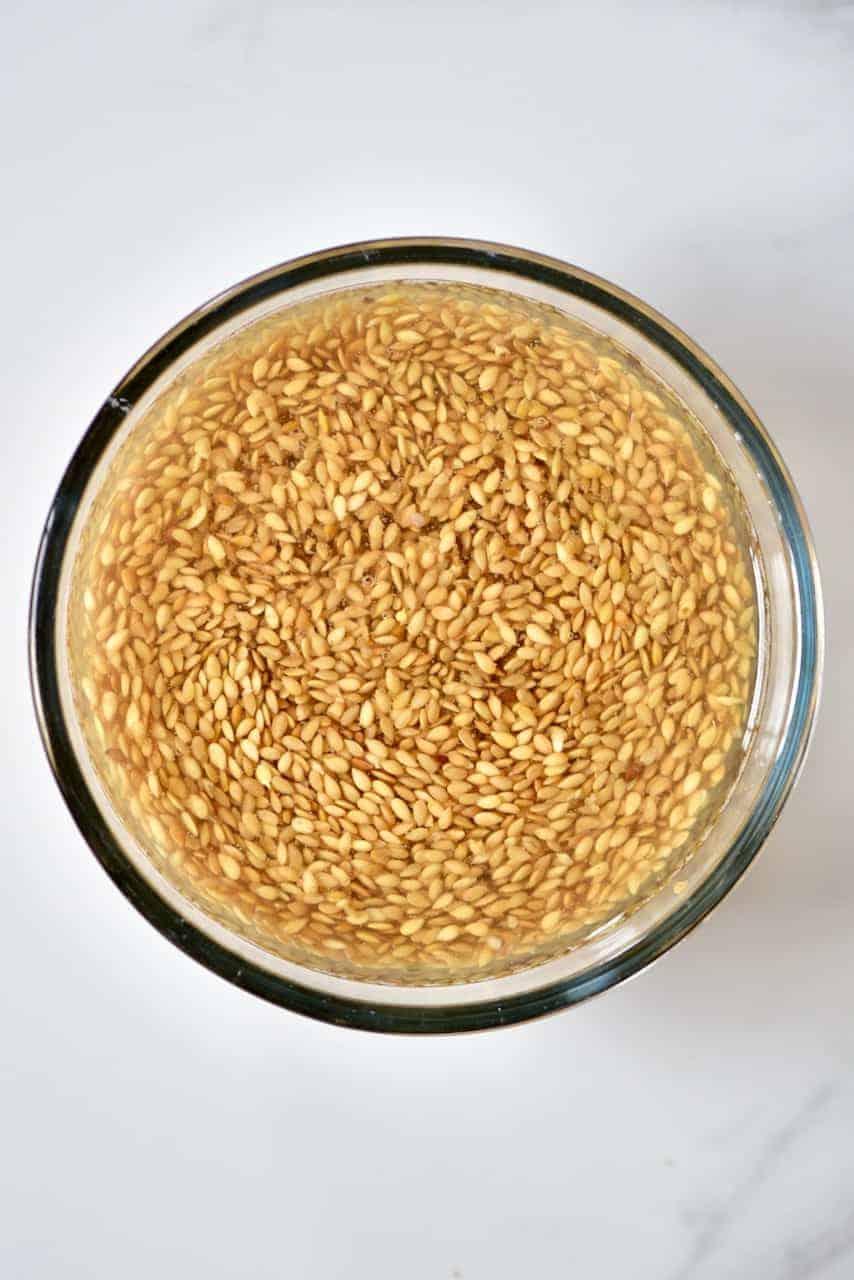
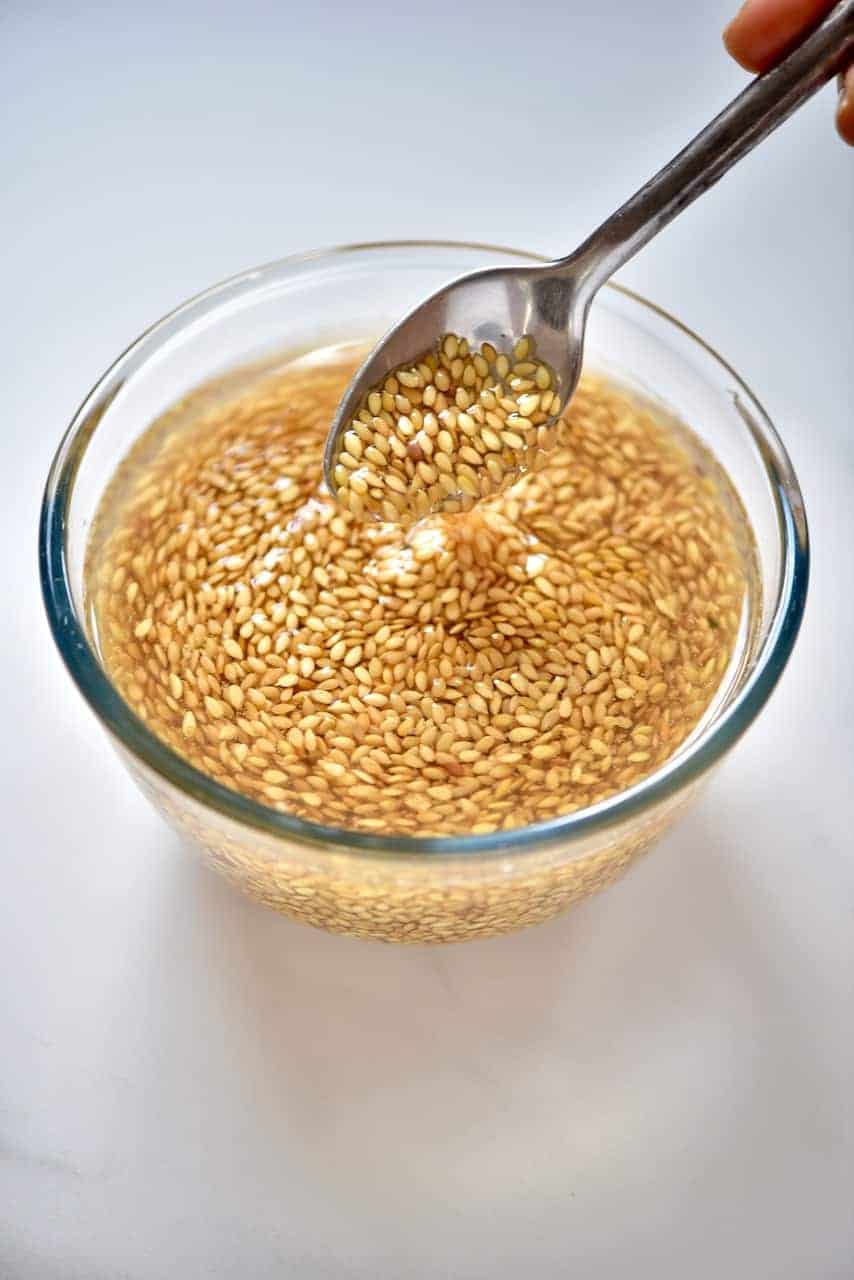
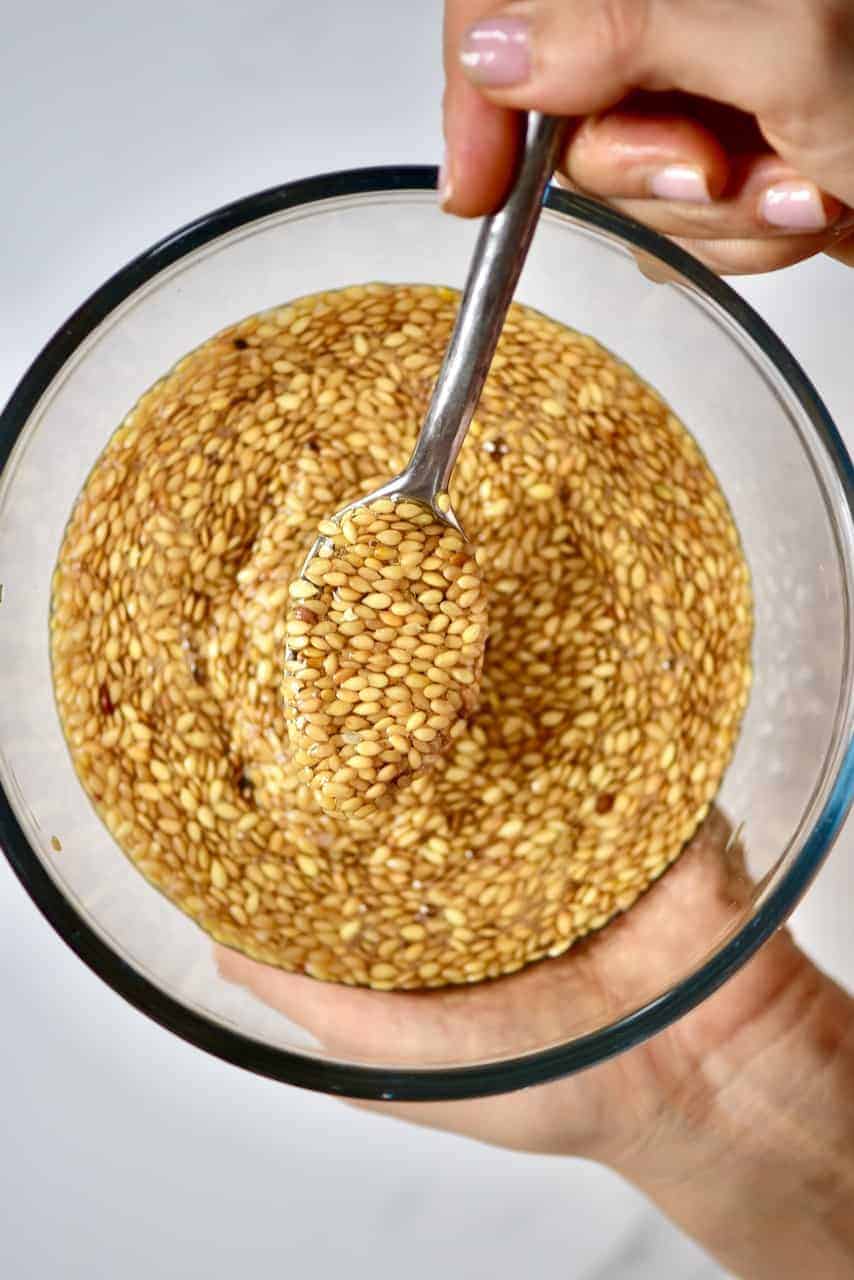
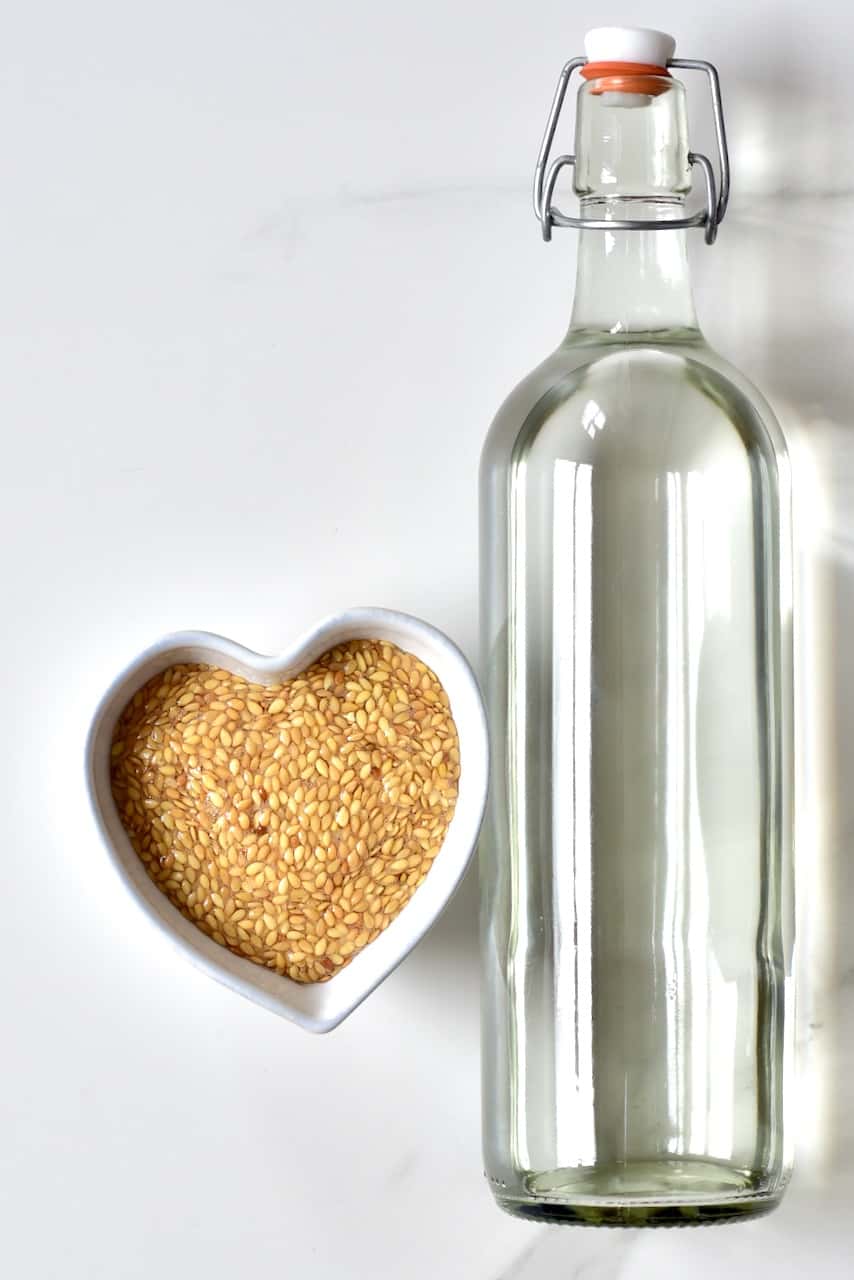
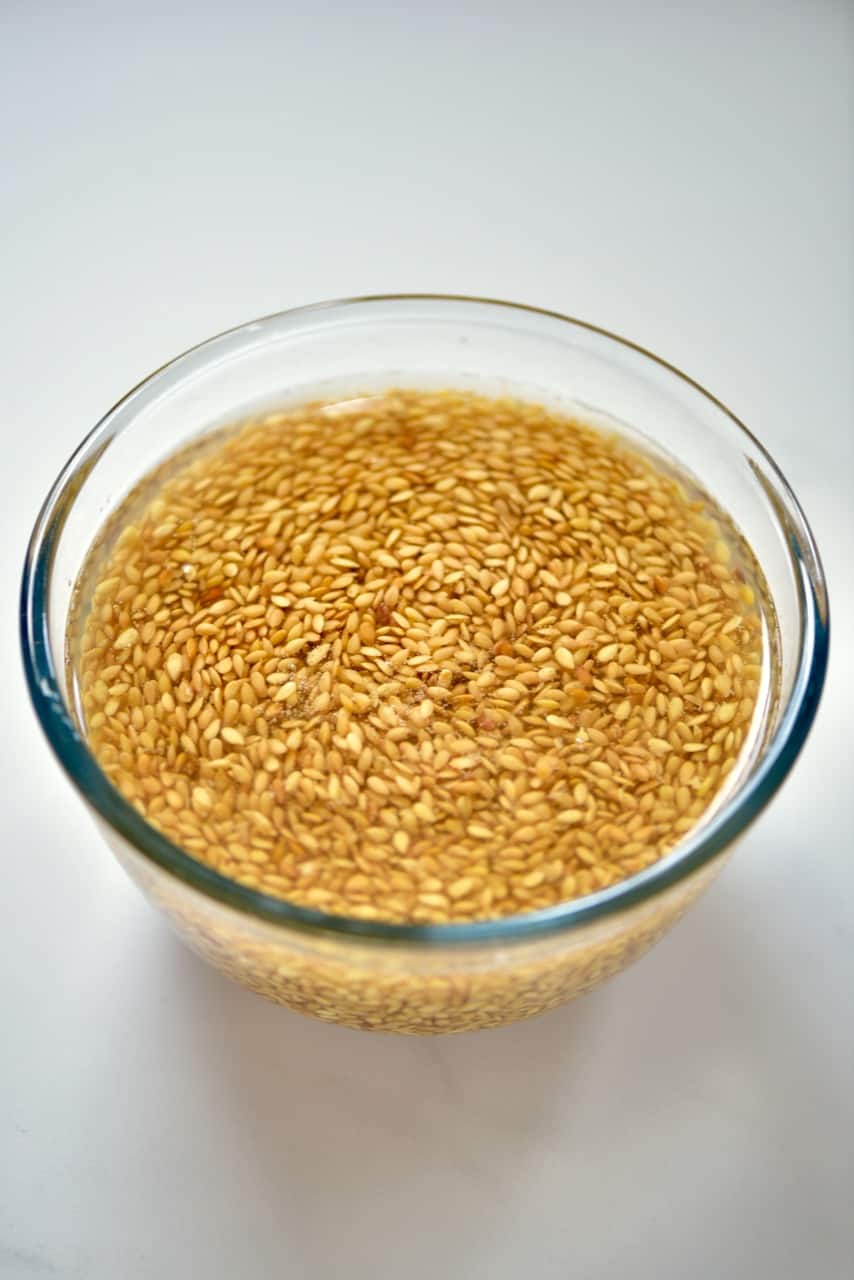
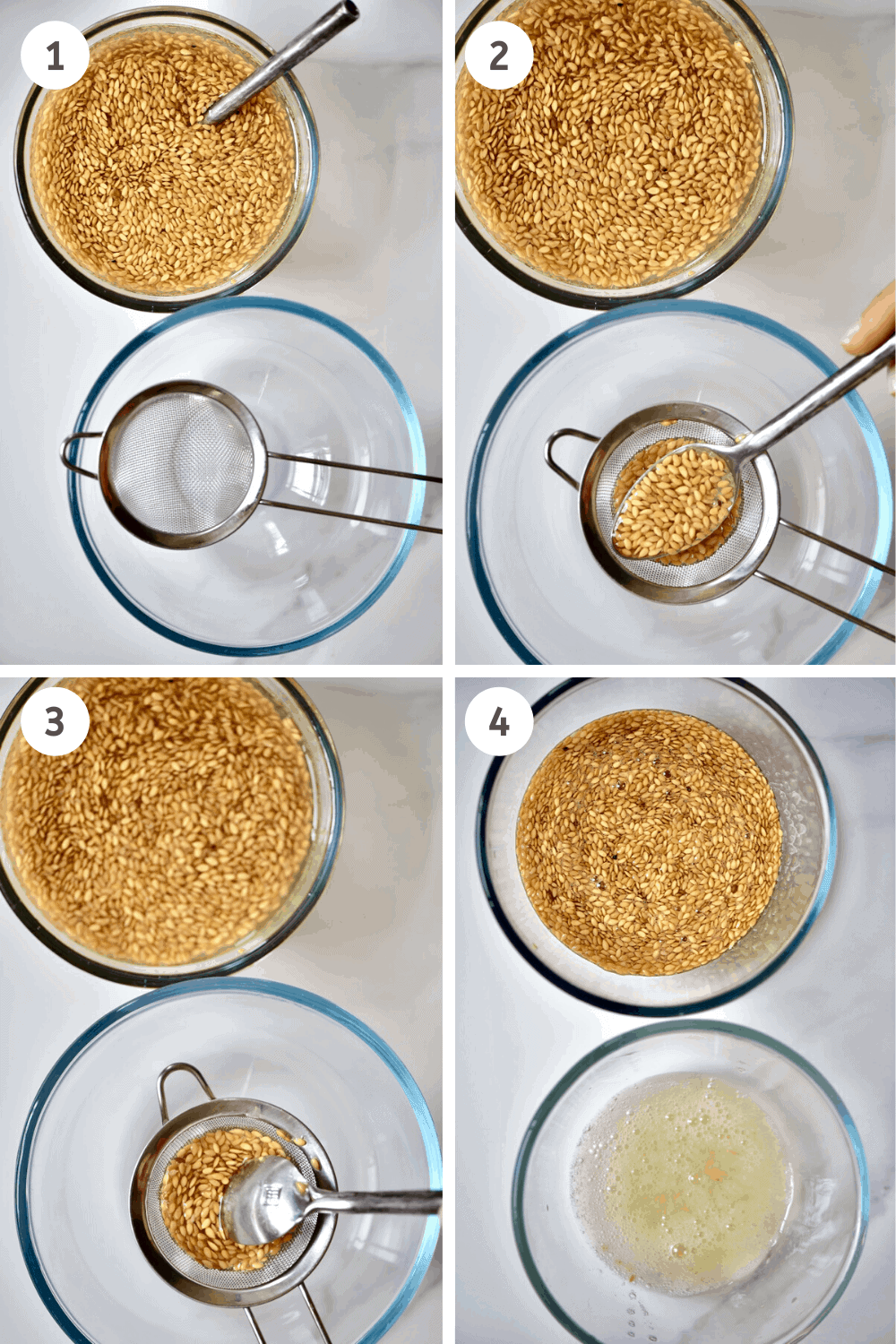
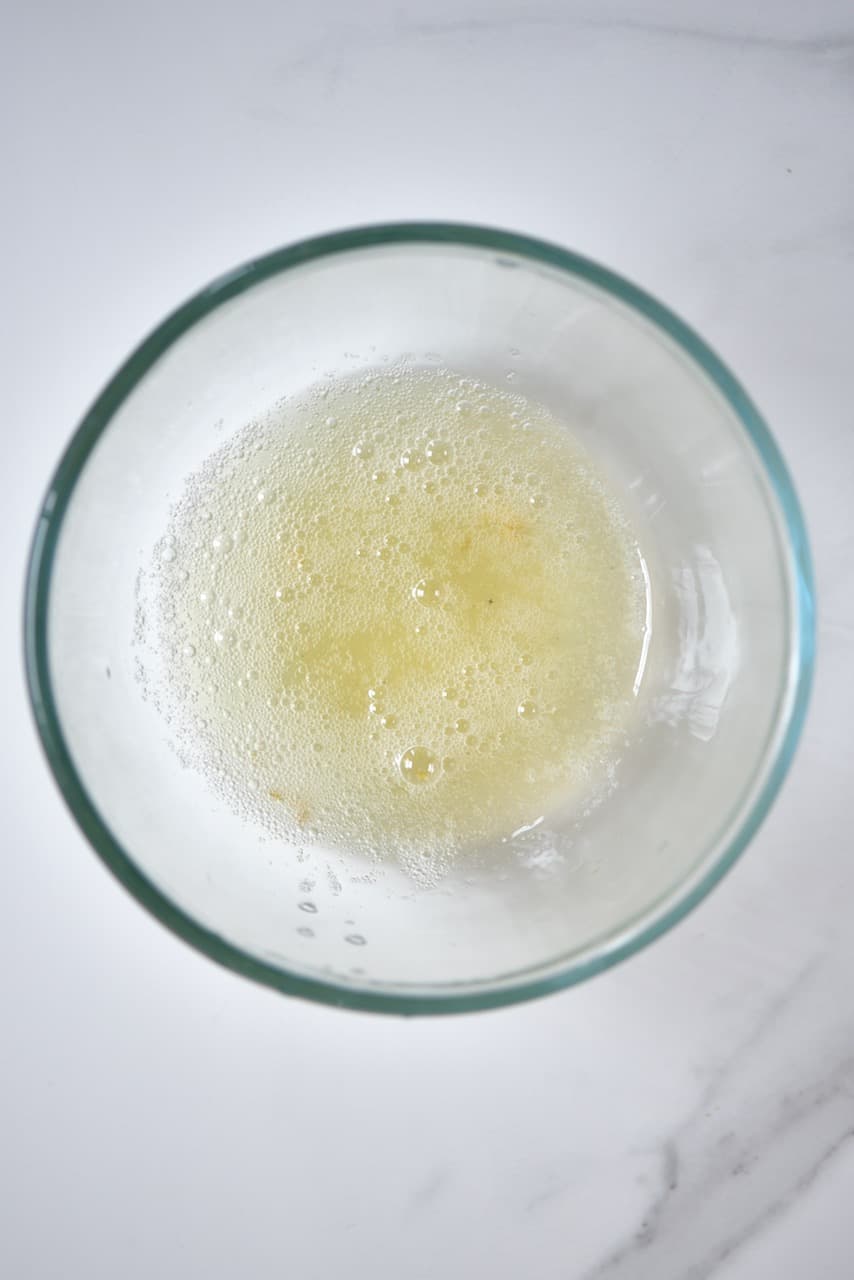
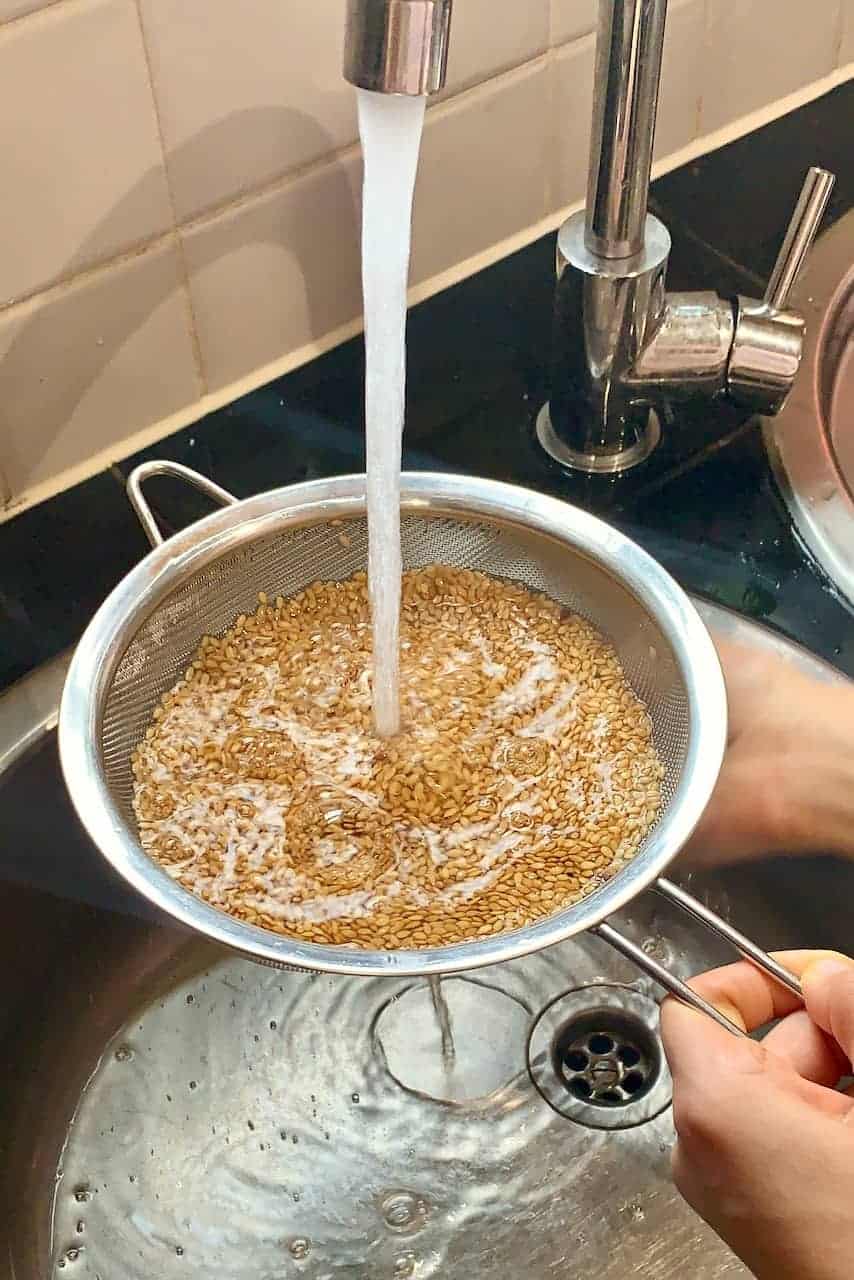
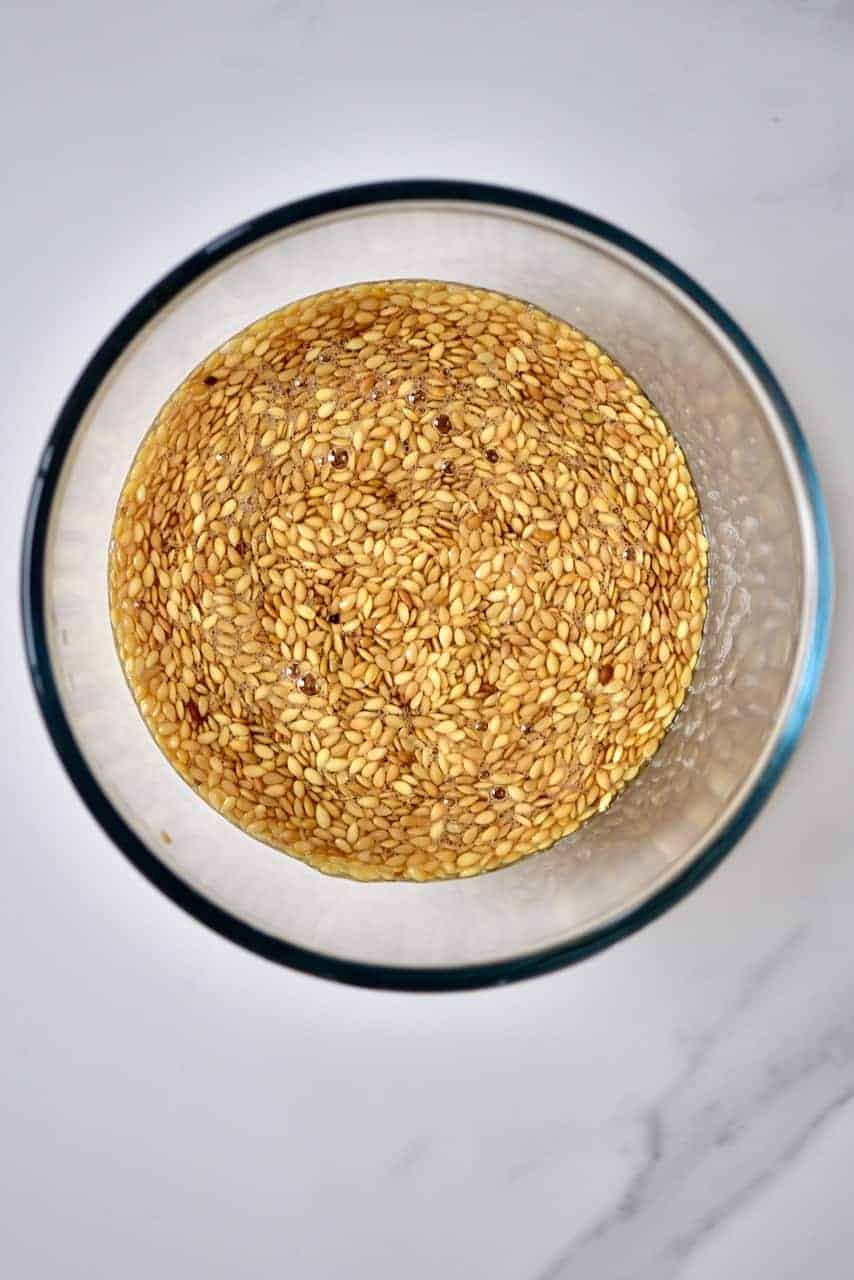
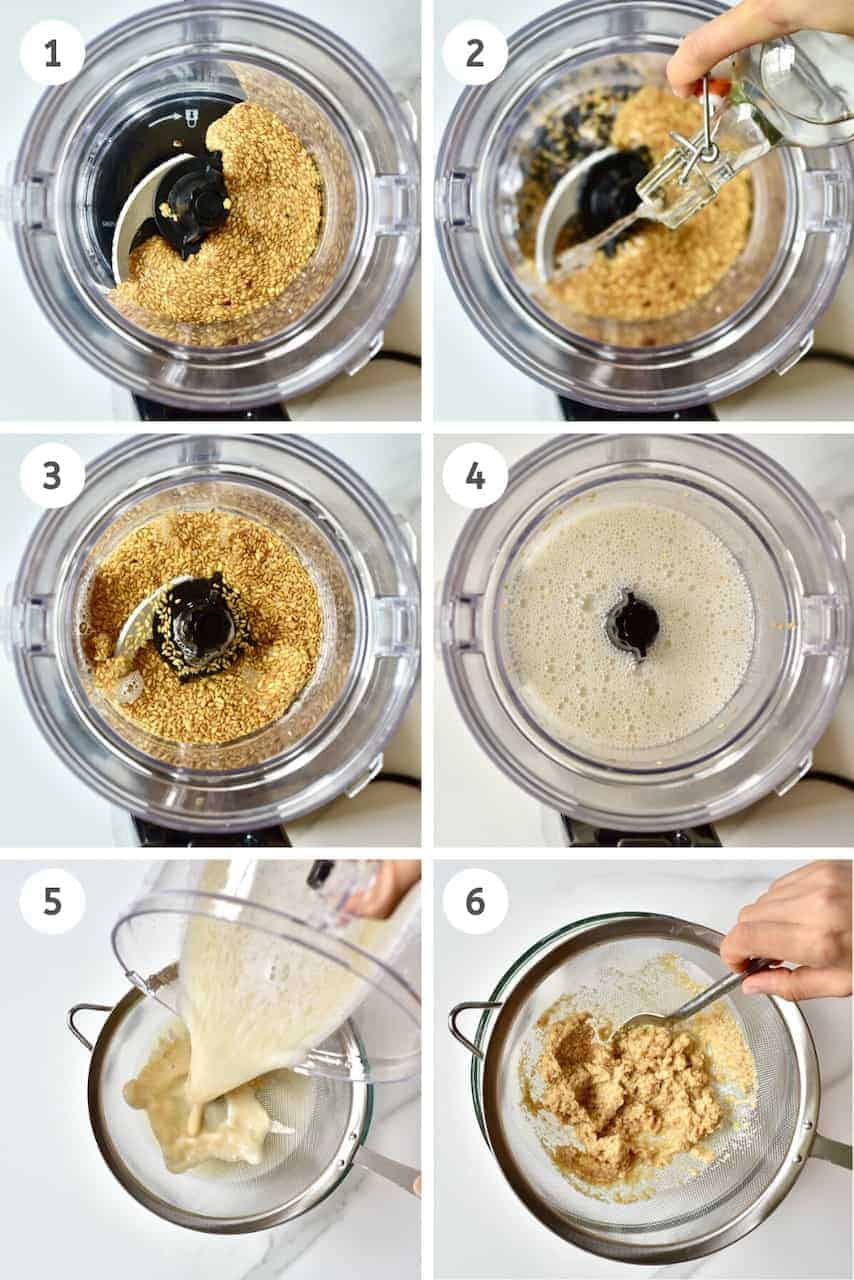
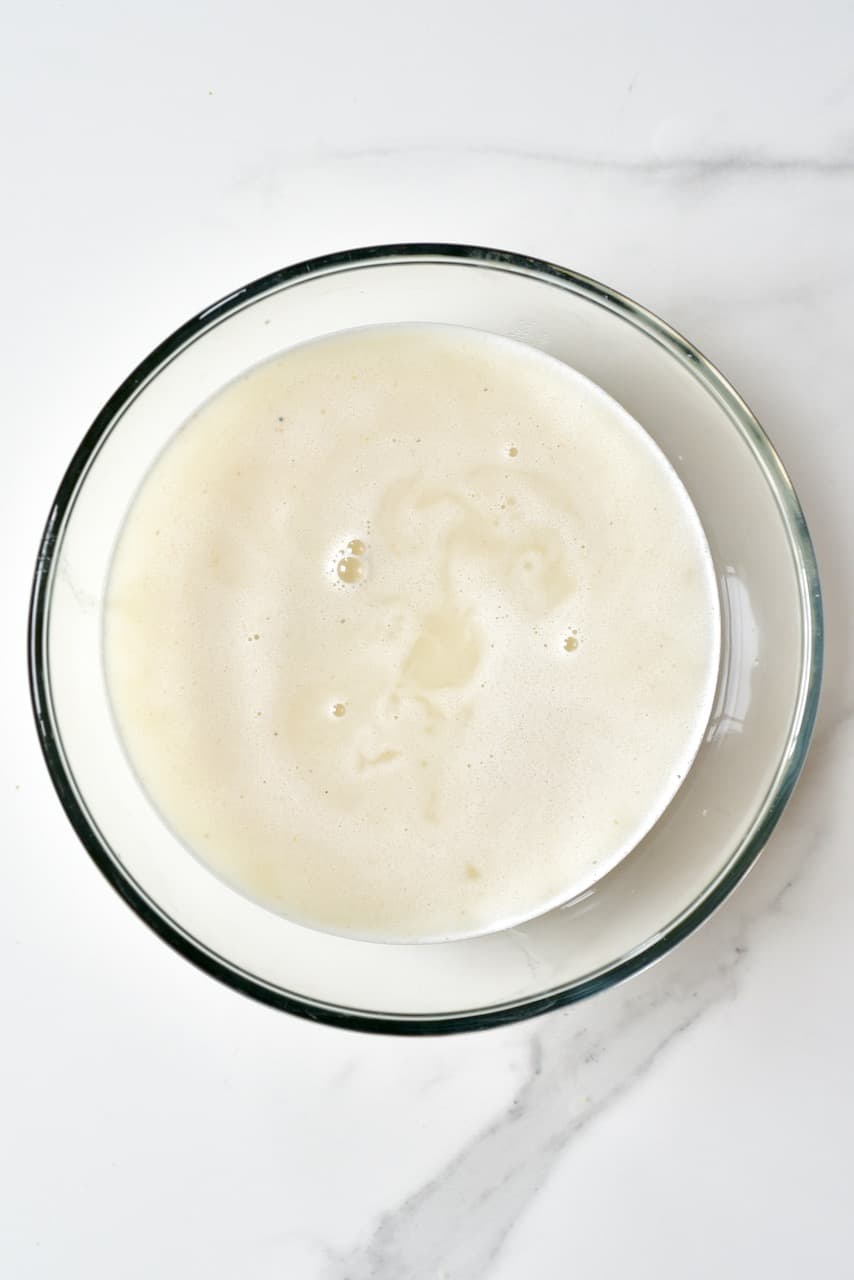
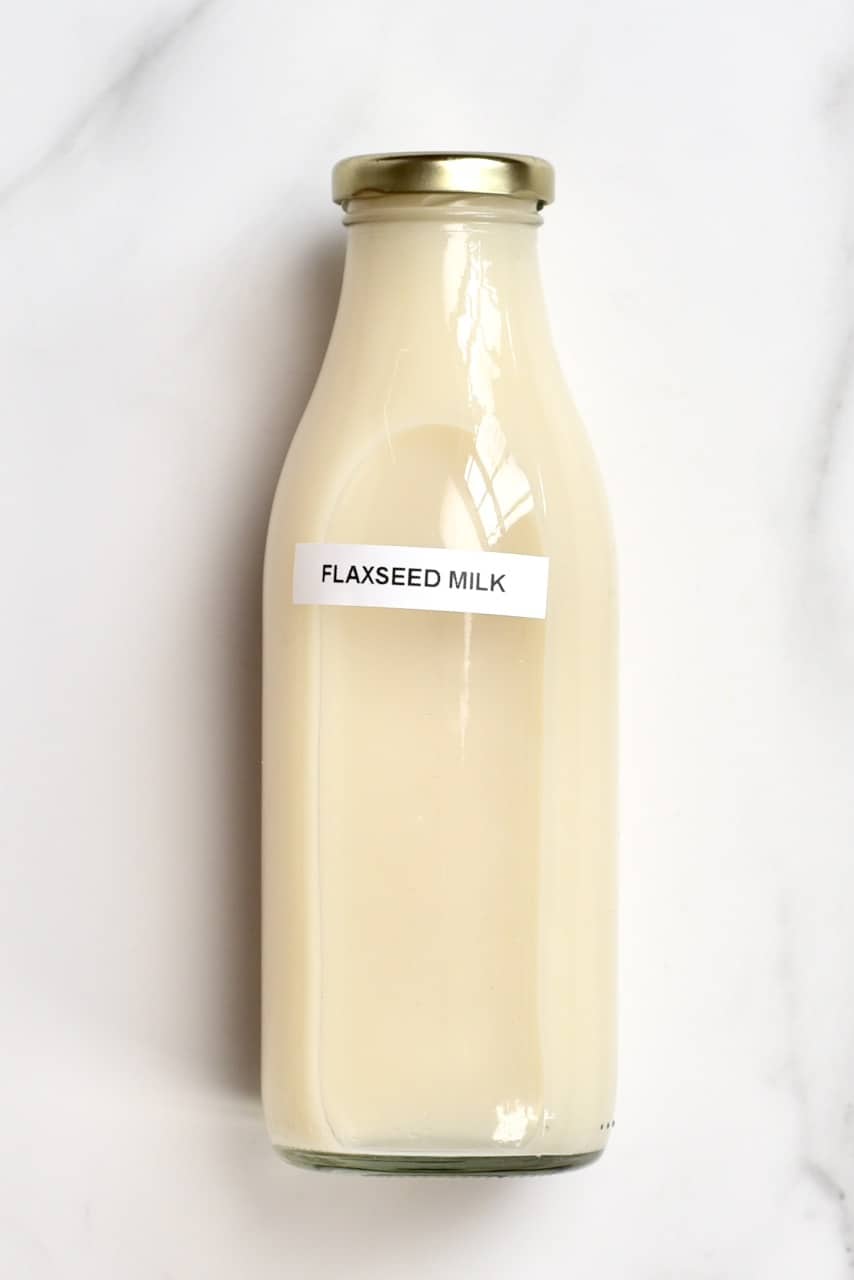
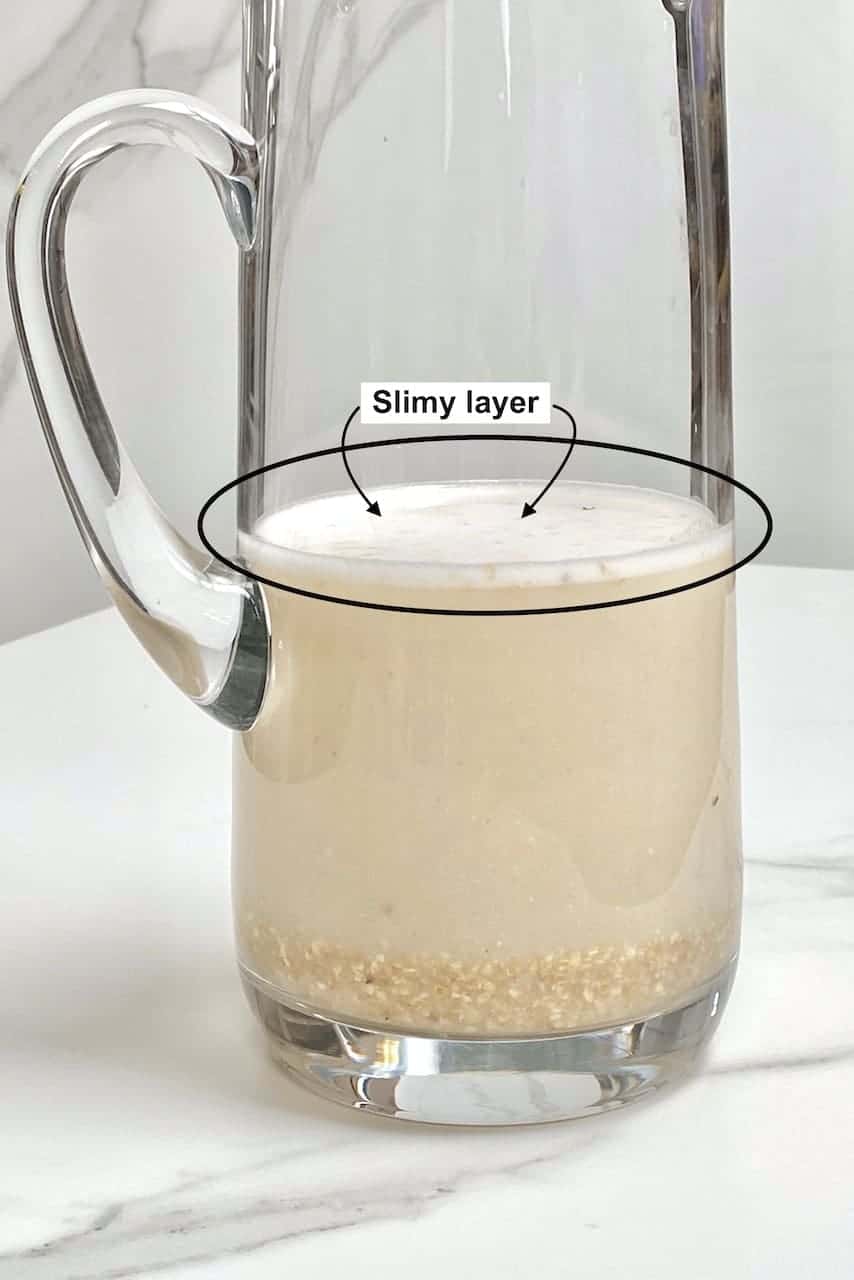
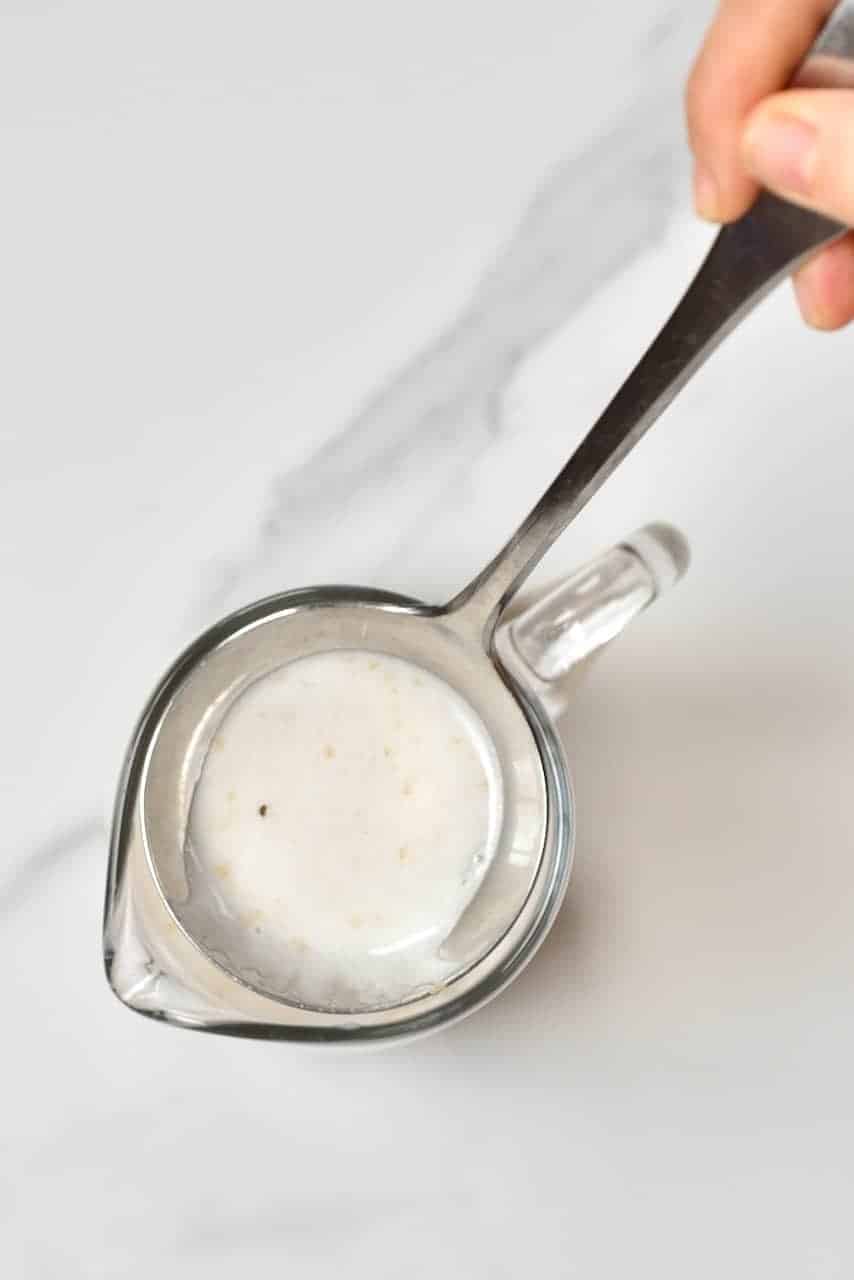









Good Recipe. Thanks for sharing.
Thank you so much, great to hear you liked the recipe! Happy new year!
Are there any articles on what nutrients the slimy gel might contain? I wonder if we are losing benefits by removing it.
Hi Ida,
There is plenty of information on the benefits and what the gel can be used for on Google. Unfortunately, we have to remove it before we make flaxseed milk as it won’t be pleasant to drink/use slimy milk. The milk will still contain many of the nutrients, I hope this answers your questions. 🙂
Hi! does the ALA get affected in any way by the process of this recipe? Can we still consider flaxseed milk a good ALA source? Thank you so much <3
Hi Marcela,
Yes, flaxseed milk can be considered a good source for ALA.
Hi,
just bought a pack of the flax see and will try it tomorrow.
i heard is good for fertility, and other benefits, can i also give them to my children.
thanks
Thank you for your comment and for giving this recipe a try 🙂
I use flax gel as a hairstyling product. I wasn’t aware it could be used as an egg substitute! Do you use it as a one to one substitute for raw eggs?
Hi Sara,
1 Tbsp ground flaxseed & 2.5 Tbsp water are enough to replace 1 raw egg. Here is more info in this blog post: https://www.alphafoodie.com/how-to-make-a-flax-egg/ If you are substituting the raw eggs, I’d suggest doing so only for recipes that call for 1-2 eggs.
I hope this helps :).
I’m a cosmetologist who hates synthetic chemicals (I know, I know). Would you share the recipe, please?!
Question for Sara 🙂